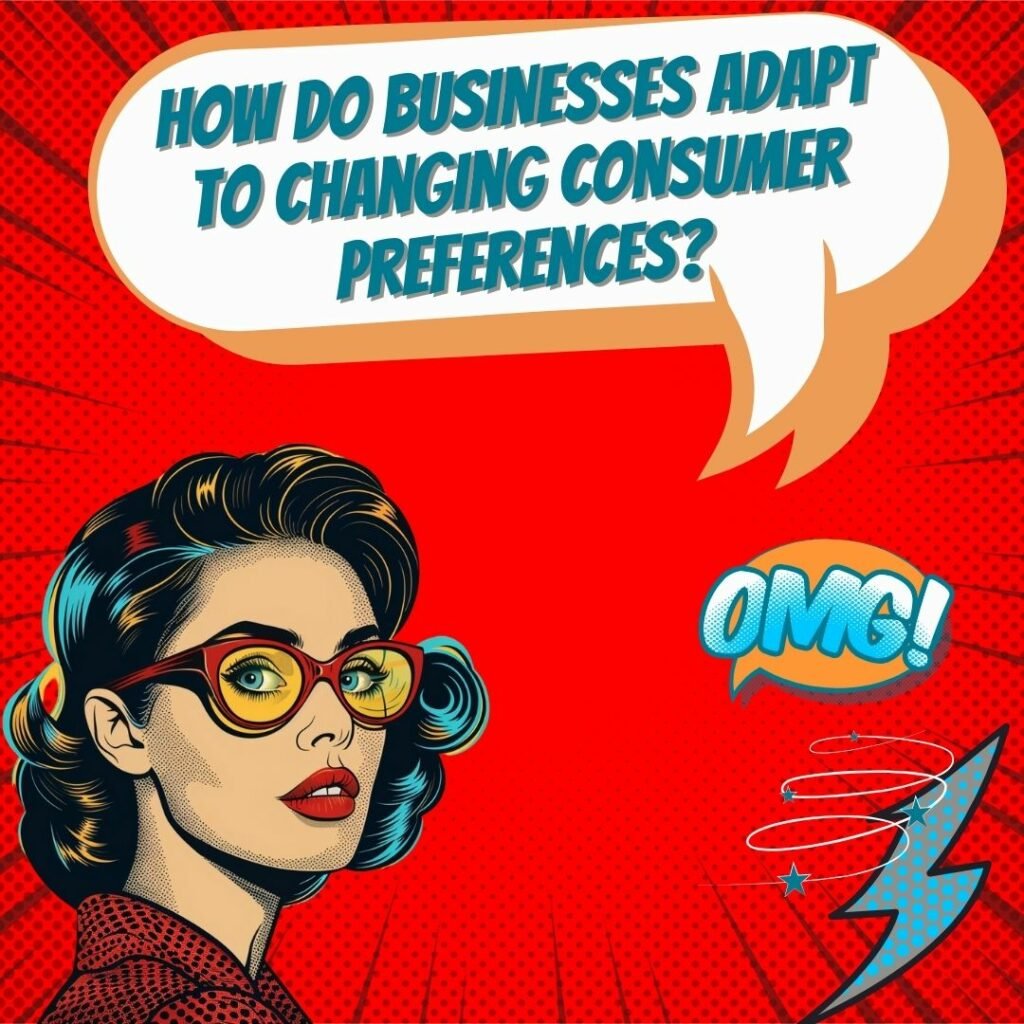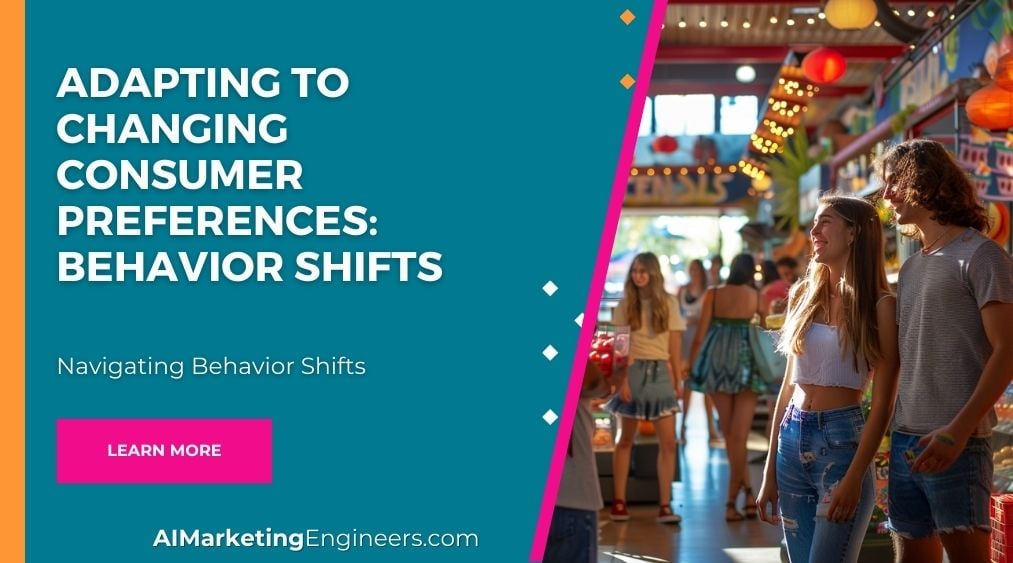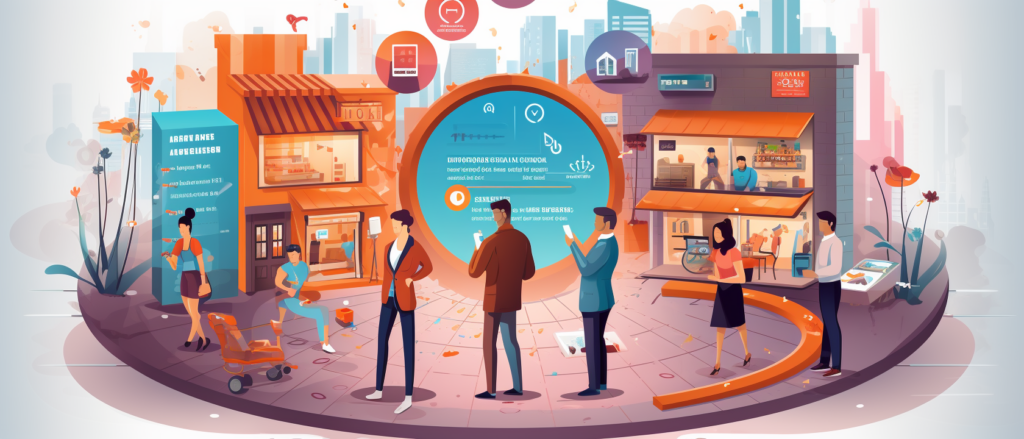Key Takeaways
✅ Recognize and Respond to Shifts Early: The early bird gets the worm, or so the saying goes. For businesses, this couldn’t be more true when it comes to adapting to consumer behavior. Spotting trends before they become mainstream can set a company apart, making analytics tools more important than ever. It's reported that companies that leverage customer behavioral insights outperform peers by 85% in sales growth and more than 25% in gross margin. Actionable takeaways include implementing robust analytics to track consumer habits and preferences as they evolve.
✅ Adaptation Strategies: Agility in business isn’t just a buzzword; it’s a survival strategy. With the digital landscape constantly evolving, businesses need to be ready to pivot at a moment's notice. Integrating technology, optimizing e-commerce platforms, and committing to sustainable business practices can help companies stay in tune with consumer desires. Recent studies show that 72% of consumers are buying more environmentally friendly products than they were five years ago, emphasizing the need for companies to adapt their offerings accordingly.
✅ Understanding Consumer Behavior: The last few years have ushered in dramatic shifts in consumer behavior, with digital becoming the new normal for many. External forces like economic changes, technological advancements, and socio-cultural movements play a significant role in shaping consumer preferences. Keeping a pulse on these shifts can help businesses understand what motivates buying decisions, with data showing that 63% of consumers expect companies to understand their unique needs and expectations.
 Introduction
Introduction
Are you ready to stay ahead in a market where the only constant is change? Adapting to Changing Consumer Preferences has never been more critical than in today's fast-paced, digitally-driven landscape. With consumer behaviors and preferences shifting at an unprecedented pace, businesses must be agile and responsive to survive and thrive.
This article delves into the heart of consumer preference shifts, from the rise of sustainability and eco-conscious buying decisions to the growing demand for personalized and digitally accessible services. By understanding these dynamics, companies can develop strategies to meet evolving customer expectations, foster loyalty, and drive growth.
We'll explore how adapting to these changes is not just about survival but unlocking new opportunities for innovation and connection. With actionable insights and examples, you'll discover how to tap into these trends to maximize your business’s potential. Get ready to uncover the strategies that will prepare your business for the future, ensuring you’re not just keeping up but setting the pace in your industry.
Top Statistics
| Statistic | Insight |
|---|---|
| Data Privacy Concerns: 76% of respondents are concerned about how companies use their personal data. | This highlights the growing demand for transparency and ethical handling of customer data, pressuring companies to adapt their privacy policies. |
| Social Shopping: 33% have discovered a new product on social media in the past three months. | Underscores social media's evolving role from a networking platform to a significant sales channel, necessitating innovative social media marketing strategies. |
| Omnichannel Approach: 75% of consumers expect a consistent experience across every channel. | This statistic is crucial for companies looking to provide a seamless buying journey, highlighting the importance of integrating multiple platforms for a unified brand experience. |
| Customer Service Expectations: 59% of consumers have higher expectations for customer service than a year ago. | Indicates a critical shift towards quality and instantaneity in customer service, pushing companies to elevate their customer support systems. |
| Ecommerce Growth: 59% of marketers report more social sales in 2023 than in past years. | Ecommerce continues to surge, propelled by social media, marking an essential pivot point for brands to integrate social selling into their overall sales strategy. |
Understanding the Nature of Consumer Preferences
In a world where societal trends, technological advancements, and lifestyle changes evolve at an astonishing pace, understanding consumer preferences has never been more vital. It's this ever-shifting landscape that keeps brands on their toes, forcing them to remain agile and responsive. Consider how the rise of smartphones changed shopping habits or how, more recently, global events have accelerated the adoption of remote work and online shopping. Businesses that can swiftly adapt to these changes, anticipate future trends, and respond with innovative solutions, secure a competitive edge that's hard to rival.
Key Consumer Preference Shifts
Several shifts are shaping today’s market, each representing a unique opportunity for brands to connect with their audiences. Sustainability and conscious consumerism are leading the charge, with an increasing number of consumers demanding transparency, eco-friendliness, and ethical practices from the products they purchase. There's also a growing affection for local products and services, reflecting a community-centric approach and a preference for artisanal or locally sourced goods. Subscription services are expanding across industries, indicating a desire for convenience and personalized offerings. Likewise, the rise of contactless services and social media commerce points to an increased reliance on digital solutions. Amid these trends, a notable shift towards experiences over possessions, a focus on mental wellbeing, and minimalist design preferences underlines a broader change in lifestyle and values.
Strategies for Adapting to Changing Consumer Behavior
Adapting to these shifts requires a multi-faceted approach. Leading with an omnichannel retailing strategy ensures a seamless and integrated shopping experience, whether online, through mobile, or in-store. Strengthening online presence and ecommerce capabilities has become non-negotiable, especially in a digital-first world. Personalization and customization stand out as critical components of customer engagement, offering tailored experiences to meet individual needs effectively. However, the core of thriving in this changing environment is staying agile and responsive. Businesses that continuously monitor consumer trends and are willing to pivot or adapt their strategies accordingly are the ones that stay ahead.
The Importance of Understanding Consumer and Competition
Why is it so crucial for businesses to dive deep into consumer behavior? Simply put, it's the foundation upon which customer-centric strategies are built. By understanding the shifts in preferences and behaviors, companies can design products, services, and experiences that resonate deeply with their target audiences. This alignment not only drives sales but fosters loyalty and encourages repeat purchases. Moreover, in an era where consumer feedback is abundantly available through social media and online reviews, engaging with and adapting to consumer needs is more achievable and, simultaneously, more necessary than ever.
AI Marketing Engineers Recommendation
Recommendation 1: Leverage Data Analytics to Understand Consumer Behavior: Data drives decisions. By implementing advanced data analytics tools, companies can monitor real-time consumer behaviors, identifying emerging patterns and preferences. A study by McKinsey & Company revealed that businesses utilizing customer analytics are 23 times more likely to outperform in new customer acquisition and 9 times more likely to excel in customer loyalty compared to those who don't. Data analytics allows for a granular understanding of customer desires, enabling businesses to adapt quickly and effectively to changing consumer behaviors. By harnessing these insights, companies can tailor their marketing strategies, improve customer experiences, and ultimately drive growth.
Recommendation 2: Embrace Social Listening Tools to Capture Real-Time Market Sentiments: Social media is the pulse of consumer preferences. Employing social listening tools can provide businesses with invaluable insights into consumer conversations, pain points, preferences, and expectations. These tools track mentions of your brand, competitors, and the industry across multiple platforms, offering a comprehensive view of market sentiment. In an era where 71% of consumers expect companies to deliver personalized interactions, social listening enables brands to understand and react to consumer preferences dynamically, fostering better customer engagement. By staying attuned to real-time market sentiments, businesses can refine their strategies, address concerns promptly, and build stronger relationships with their audience.
Recommendation 3: Adapt Content Marketing Strategies to Align with Consumer Values and Interests: Content is king, but context is queen. Developing a content marketing strategy that aligns with the evolving interests and values of your target audience is vital. With the advent of purpose-driven marketing, 64% of consumers say they have built a strong relationship with a brand solely on the basis of shared values (Edelman Trust Barometer). Understanding your audience's current interests and concerns, and producing content that reflects these values, can significantly enhance brand loyalty and appeal. Utilize tools like Google Trends and BuzzSumo to stay ahead of trending topics and ensure your content marketing efforts are timely, relevant, and engaging. By aligning your content with consumer values, you can create deeper connections and drive meaningful engagement.
Conclusion
In the fast-paced world we live in, adapting to changing consumer preferences is not just an option; it's a necessity for businesses aiming to thrive. The dynamic nature of consumer behavior, heavily influenced by societal trends, technological advancements, and shifts in lifestyle, requires brands to be on their toes, constantly evolving to meet new demands. From the rising tide of sustainability and conscious consumerism to the preference for local products and services, the shifts are clear and significant.
The landscape is changing, and with it, the strategies for engaging and retaining customers must also transform. Whether it's through embracing omnichannel retailing, enhancing online presence, or focusing on personalization, the goal remains the same: to understand and cater to the evolving needs of consumers. But why is this understanding so critical? Simply put, it's about staying relevant and competitive in a market that's increasingly crowded and noisy. With preferences shifting towards sustainability, localism, contactless services, and digital experiences, businesses have a roadmap of where to focus their efforts.
Staying updated with these trends and preferences is more than just a strategy; it's a commitment to growth and adaptability. By being responsive and agile, businesses can not only keep up but stay ahead, ensuring they not only meet the current needs of their customers but anticipate future ones. So, as we look to the future, the question isn't whether consumer preferences will continue to evolve—they undoubtedly will. The question is, how quickly can businesses adapt to these changes? Those who can answer this with confidence and agility are the ones who will find success in this ever-changing landscape.
FAQs
Question 1: What is the significance of adapting to changing consumer preferences?
Answer: Adapting to changing consumer preferences is crucial for businesses to remain competitive and relevant. It helps build strong customer relationships, fosters loyalty, and ensures long-term success by meeting evolving needs and expectations.
Question 2: What are the key factors driving changes in consumer preferences?
Answer: Factors such as technology, culture, economic shifts, and personal experiences influence changes in consumer preferences. Businesses must stay attuned to these factors to tailor their products, services, and marketing strategies accordingly.
Question 3: How do consumer preferences impact enrollment periods in the insurance industry?
Answer: Changing consumer preferences in the insurance industry are driven by the rise of consumerism, with individuals seeking more cost-efficient options and greater involvement in their care. Insurance agencies must adapt by providing more resources and customer-centric services to meet these evolving needs.
Question 4: What role does data analysis play in adapting to changing consumer preferences?
Answer: Data analysis is essential for understanding consumer trends and preferences. It helps businesses identify patterns, trends, and shifts in preferences, enabling them to tailor their products, services, and communication to meet evolving needs.
Question 5: How can businesses leverage technology to adapt to changing consumer preferences?
Answer: Technology can be leveraged to improve the consumer experience, provide personalized care, and enhance customer service. It also enables businesses to stay agile and responsive to emerging trends and preferences.
Question 6: What is the importance of customer-centric marketing in adapting to changing consumer preferences?
Answer: Customer-centric marketing focuses on understanding and addressing individual needs, fostering trust and loyalty. It helps businesses stay aligned with changing customer trends and preferences, ensuring they remain relevant and competitive.
Question 7: How can businesses stay ahead of changing consumer preferences?
Answer: Businesses can stay ahead by conducting market research, gathering customer feedback, and analyzing data to understand evolving preferences. They should also be agile and adaptable, willing to adjust their strategies and offerings in response to emerging trends.
Question 8: What strategies can businesses use to improve customer service during enrollment periods?
Answer: Businesses can improve customer service by outsourcing customer service, leveraging technology, and providing personalized care. They should also prioritize adaptability and be prepared to handle the influx of policyholders during enrollment periods.
Question 9: How can businesses measure the effectiveness of their strategies in adapting to changing consumer preferences?
Answer: Businesses can measure effectiveness by tracking metrics such as customer satisfaction scores, net promoter scores, customer retention rates, and customer lifetime value. They should regularly evaluate and adjust their strategies to ensure they are meeting evolving customer needs and preferences.
Academic References
- McKinsey & Company. Adapting To Changing Consumer Behavior: Strategies For Indie Retailers. McKinsey & Company. This report reveals that 75% of consumers are exploring new shopping behaviors, highlighting a significant shift in their preferences and priorities, and provides insightful strategies for indie retailers to adapt.
- Emergen Research. Adapting to the New Normal: Shifting Consumer Behaviors and Preferences. Emergen Research. According to this study, the Smart Retail Market is poised to reach USD 145.85 billion by 2032, growing at a CAGR of 22.9%, underscoring the rapid evolution in consumer preferences and the growing significance of smart retail solutions.
- Digital Trek. Adapting to Changing Consumer Behaviors: Strategies for Modern Businesses. Digital Trek. This resource emphasizes the importance of recognizing shifts in consumer habits early on, enabling businesses to stay ahead by meeting customers' expectations with flexibility and innovation.
- bizibl.com. How to Adapt to Changing Customer Behaviours. bizibl.com. The article argues that businesses must offer an agile, personalized experience across all channels or touchpoints to effectively adapt to changing customer behaviors, suggesting a comprehensive approach to customer engagement.
- Bazaarvoice. Changing consumer preferences: Insights and trends. Bazaarvoice. This report highlights that 73% of consumers globally have changed their shopping behaviors, with a strong inclination towards value-seeking, suggesting businesses to realign their strategies to meet these emerging consumer preferences.












